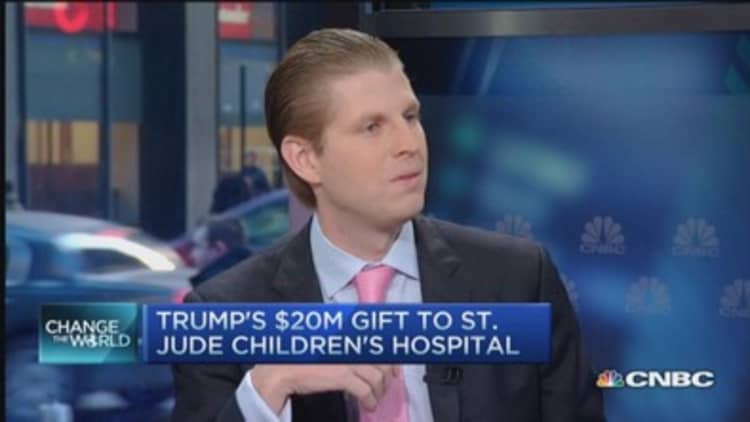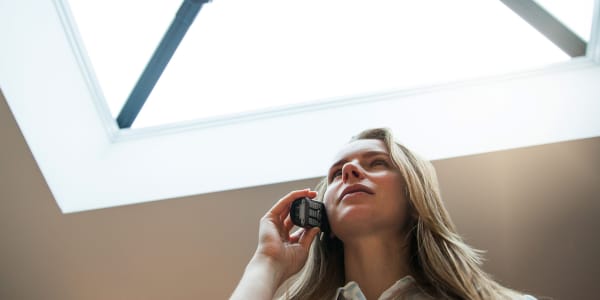Four cancer charities—Cancer Fund of America and three affiliated groups—were recently accused by the Federal Trade Commission of bilking consumers out of $187 million from 2008 through 2012 and doing little to help cancer patients.
If anything positive comes from the allegations these organizations are shams, it will be the reminder that donors should eyeball a nonprofit before writing a check.
"Don't squander your charitable dollars," said Daniel Borochoff, president and founder of philanthropy watchdog group CharityWatch. "A group that appears outstanding on its website or in its mailings may be doing little that is charitable."
Some of the defendants named by the federal officials have settled with the government; litigation against James Reynolds Sr., president of both Cancer Fund of America and affiliated group Cancer Support Services, is continuing.
While this situation is an extreme example of what can go wrong after making a donation, it illustrates how important it is to vet any group before you write a check.
"People seem to care more about how their donations are being spent more than they used to, probably partly because there's so much access to information now," said Jeff Nauta, a certified financial planner and principal at Henrickson Nauta Wealth Advisors. "It puts a bigger burden on charities to show they are doing quality [work] and achieving their mission.
"I think it's a good thing, because it helps hold everyone accountable," he added.
Read MoreLonely hearts conned out of cash
According to the National Center for Charitable Statistics, there are about 1.5 million tax-exempt organizations, of which more than 1 million are public charities. Giving USA estimates that in 2013, charitable contributions by individuals, foundations, bequests and corporations reached more than $335 billion. Religious organizations received the lion's share ($105.5 billion).
Financial advisors such as Nauta often help clients vet the charities they are interested in helping. Nauta goes through a checklist, which starts with consulting websites such as GuideStar, GiveWell, CharityNavigator and CharityWatch, which all analyze and rate charities to varying degrees. The Better Business Bureau also offers insight into charities through its Wise Giving Alliance at give.org.
In fact, CharityWatch had been giving Cancer Fund of America a grade of F since 1993, when it first ranked the charity.
Nauta said he also advises checking for pending lawsuits against the charity. Many states provide free online access to court records. While a lawsuit is not proof that a charity is doing something nefarious, it might give a donor pause.
Additionally, most nonprofits—excluding churches—are required to file a Form 990 yearly with the Internal Revenue Service. (Those with less than $200,000 in annual revenue can file a simplified form.)
The form includes broad financial disclosures and must be made available to anyone requesting it. Many charities post the form on their websites. However, it can often take up to a year after the group's fiscal year-end for the 990 form to be available.
Read MoreTop 10 investment scams
However, CharityWatch's Borochoff said that some information in the form can be vague, especially when it comes to in-kind gifts (anything besides cash) made by the charity.
"It could say they're sending medicine and medical supplies worth $1 million somewhere overseas, but it doesn't give you a really clear idea of exactly what they're giving," Borochoff said. "Sometimes there have been cases where the value of such [in-kind gifts] are wildly inflated."
Once you've checked the watchdog websites and the charity's Form 990, advisors recommend looking into the governance and oversight of the group. Start by looking at the board of directors.

"Sometimes, on a small board, you see everyone has the same last name or some other commonality that makes it not seem like an impartial board," said Mitchell Kraus, a CFP and partner with Capital Intelligence Associates.
You also can look at the management team's training, executive compensation and even how often leadership changes.
Nauta at Henrickson Nauta Wealth Advisors said that if the compensation is high compared to similar organizations or there's a lot of turnover in leadership, it can be a reason to examine the charity more closely.
It's really about seeing if a charity is achieving its results and doing that in an efficient manner.Jeff Nautaprincipal at Henrickson Nauta Wealth Advisors
"Those things might not point to fraud but can be a yellow flag," Nauta said. "It's really about seeing if a charity is achieving its results and doing that in an efficient manner."
Also, the more significant your donation is, the better the chance you'll be given access to more detailed information. That could include meeting with management or looking at detailed information not required on their financial forms.
Tom Scanlon, a CFP with Raymond James Financial Services, suggests focusing on a few charities instead of trying to spread your donation dollars thinly across many groups.
Read MoreHow to get men to give
"Instead of carving up your charitable donation budget 10 ways, maybe carve it up three ways," Scanlon said. "You can have more impact that way, because each charity will get significantly more."
Borochoff at CharityWatch also said if a charity does not have its financial statements audited, donors should be cautious.
"People don't look as closely at charities as they do public companies," he said. "Can you imagine what would happen to a company's stock if it didn't get audited? But charities can choose to do that."
—By Sarah O'Brien, special to CNBC.com




